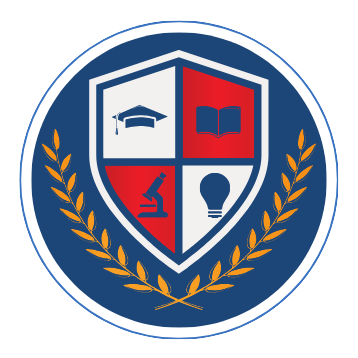How to Start Homeschooling for Under $100 (Without Sacrificing Quality)
October 30th // Written By: Becca Wright
Learn how to start homeschooling for under $100! Discover budget-friendly homeschool supplies, free curriculum resources, and simple planning tips.
If you’ve ever thought about homeschooling your kids but assumed it was expensive, here’s the truth: you can start homeschooling for under $100 — and do it well.
Homeschooling doesn’t require pricey boxed curriculums or hundreds of dollars in supplies. With the right strategy, a few smart purchases, and plenty of free homeschool resources, you can build a rich, flexible education that fits your family and your budget.
Let’s walk through how to start homeschooling — step by step — without spending more than $100.
Step 1: Set Your Vision and Your Budget
Before you buy anything, pause and decide what kind of homeschool experience you want to create.
Do you imagine a structured classroom setup or a cozy, discussion-based learning style? Your vision will shape what you actually need to buy.
Once you know your approach, set your budget limit. Keeping your total under $100 (USD or CAD) is completely realistic. You’ll invest in reusable, high-impact tools — and rely on free online curriculum, your local library, and printable worksheets for the rest.
Tip: Write down your priorities. Ask yourself:
What do my kids enjoy learning about?
What subjects can I teach using books or free videos?
What supplies will last more than one year?
By planning first, you’ll avoid impulse purchases and get the most value from your budget.
Step 2: Use Free and Low-Cost Homeschool Resources
There are tons of free homeschool resources online that cover everything from reading and math to science and geography.
Here are some trusted favorites:
Khan Academy – Free video lessons for K–12.
Twinkl and Teachers Pay Teachers (Free section) – Printable worksheets and themed units.
YouTube Channels like CrashCourse Kids, Homeschool Pop, and National Geographic Kids.
Library resources – Books, audiobooks, documentaries, and even free activity kits.
By using these free tools, you’ll cover 80-90% of your curriculum at no cost, saving your budget for hands-on supplies that make learning tangible and fun.
Step 3: Invest Wisely — 5 Affordable Homeschool Tools on Amazon
These five items are highly rated, budget-friendly, and reusable. Together, they’ll keep your startup costs under $100.
Dry Erase Pockets $6.99
I love these Dry Erase Pocket Sleeves for homeschooling because they’re so reusable and save a ton of paper. Children can practice writing, math problems, or even drawing, wipe it clean, and start over — no more wasting worksheets! They’re big enough for most pages, easy to store with the rings, and honestly, they make learning a little more fun. Perfect for keeping costs down while still letting kids practice over and over.
Homeschool Planner $24.99
This planner is a game-changer for any homeschool routine. It's undated, so you can start anytime without wasting pages. The gold spiral binding and sturdy cover make it feel like a treat to use. Inside, it’s packed with helpful sections—monthly tabs, weekly schedules, to-do lists, meal planning, attendance trackers, and even space for field trips and book lists. It keeps everything in one place, which means less stress and more focus on learning. Plus, the design is simple and pretty, so it’s a joy to open each day. If you're looking for a planner that helps you stay organized without being overwhelming, this one’s worth checking out.
Rocketbook Reusable Notebook $38.99
The Rocketbook Core Reusable Notebook has become an essential tool in our homeschool arsenal. It's a reusable notebook that allows us to write, scan, and erase, making it both eco-friendly and budget-friendly. Whether it's for daily lessons or creative projects, it keeps our work organized and easily accessible. Plus, it's compact and durable—perfect for on-the-go homeschooling.
I love these Boho Educational Homeschool Posters for our homeschool space! They’re bright, cheerful, and cover everything from letters and numbers to shapes and the solar system. The matte finish makes them easy to wipe clean, and the size is perfect for little hands to see without taking up too much wall space. They make learning more fun and give our room a cute, cozy vibe — all without spending a ton of money.
A whiteboard is a must-have in our homeschool setup. It's perfect for practicing math problems, spelling words, or just brainstorming ideas together. We use it daily, and it really helps keep lessons interactive and engaging. This budget-friendly option is perfect for any homeschool setup. Whether you homeschool out of your RV while travelling, at the kitchen table, on a field trip to the zoo or even in a designated homeschool space in your home—it makes for a great addition to your homeschool tools.
Together, these finds give you an advanced learning setup for under $100 — and most of them can be reused for years. You will still need to purchase basic school supplies—pencils, erasers, pens, paper etc. This should cost under $20 if you don’t already have these supplies.
Step 4: Create a Simple, Flexible Homeschool Routine
One of the biggest myths about homeschooling is that you need to follow a public-school schedule. You don’t!
A simple rhythm keeps your days structured but flexible. Try this sample daily flow:
Morning Block (30–45 min): Core subjects like math or history.
Mid-Morning Activity (20–30 min): Hands-on learning using posters or charts.
Afternoon Independent Work (20–30 min): Reading, journaling, or creative projects.
Wrap-Up (10–15 min): Discussion or reflection time.
Your planner helps you stay on track while giving you space to adjust for your family’s energy and interests.
Step 5: Reuse and Refresh Each Year
The secret to affordable homeschooling is reusability.
Most of your first-year purchases — charts, posters, manipulatives — can be used again next year. As your kids grow, simply rotate what’s on display and print new free materials online.
At the end of the year, ask yourself:
What tools did we use daily?
What did we barely touch?
What could I make myself next time?
A quick reflection helps you refine your approach and save even more money next year.
Step 6: Build Your Curriculum the Smart Way
You don’t need to buy a boxed curriculum to homeschool effectively. In fact, many experienced parents prefer to curate their own using free and low-cost materials.
Here’s how:
Choose a theme or subject each month (e.g., Ancient Egypt, Weather, or Creative Writing).
Gather library books, YouTube videos, and printables around that theme.
Add one hands-on project per week (science experiment, art, or debate).
Review what worked best and build your next unit around your child’s interests.
This approach is flexible, cost-effective, and encourages curiosity — all for free.
Step 7: Focus on Connection, Not Perfection
It’s easy to get caught up comparing your homeschool to others on Pinterest or Instagram. But the heart of homeschooling isn’t the décor or expensive materials — it’s the connection you build with your kids.
Learning at home should feel warm, personal, and freeing. Whether you’re studying nature on a walk or reading on the couch, you’re doing something incredible — giving your child a customized, values-driven education.
And you’re proving that you don’t need to spend thousands to do it well.
Step 8: Quick-Start Checklist
Here’s a recap to help you stay organized:
Define your homeschool vision
Set your budget (under $100)
Purchase your five core tools
Gather free online and library resources
Create a simple daily rhythm
Reuse materials yearly
Reflect, adjust, and celebrate your progress
Starting homeschooling under $100 is not only possible — it’s empowering. With a clear vision, a few smart investments, and a library card, you can give your kids a meaningful, personalized education at home.
You’ve got this, friend.
Grab your planner, stock your shelves with a few affordable tools, and start this new chapter with confidence.










